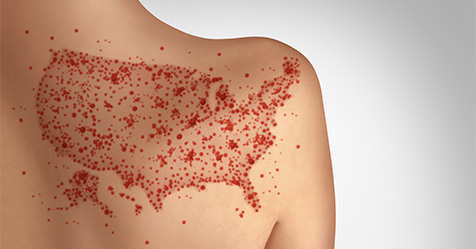WHO Cites Slow Progress in Preventing Healthcare-Associated Infections
A new report finds just 6% of countries that have infection prevention and control programs met all WHO minimum standards in the last year.
A new global report on infection prevention and control (IPC) by the World Health Organization (WHO) shows countries have made slow progress in addressing critical gaps to prevent healthcare-associated infections (HAIs).
The report found that although 71% of countries now have an active IPC program, just 6% met all the WHO IPC minimum requirements in 2023-2024. This is well behind the target of more than 90% by 2030 set in the WHO Global action plan and monitoring framework on IPC. The report also revealed that patients in low- and middle-income countries (LMICs) have up to 20 times higher risk of acquiring infections during healthcare delivery than in high-income countries (HICs).
A large proportion of HAIs can be prevented with improved IPC practices and basic water, sanitation, and hygiene (WASH) services, which are also a highly cost-effective “best buy” to reduce antimicrobial resistance (AMR) in healthcare settings. The report, launched at a G7 side-event hosted by Italy, provides a baseline assessment for policymakers, IPC professionals, and healthcare workers to guide action.
“The COVID-19 pandemic, along with outbreaks of Ebola, Marburg, and mpox, are the most dramatic demonstrations of how pathogens can spread rapidly and be amplified in healthcare settings,” said Dr. Tedros Adhanom Ghebreyesus, WHO director-general. “These healthcare-associated infections are a daily threat in every hospital and clinic, not only during epidemics and pandemics. Every country can and must do more to prevent infections in health facilities, and control them when they strike.”
HAIs prolong hospital stays and result in complications such as sepsis and, in some cases, disability or death. Addressing HAIs through improved IPC is also critical to reduce the risk of AMR, as recent estimates indicate that 136 million antibiotic resistant HAIs occur each year.
The report found that healthcare facilities face significant financial and resource challenges, including a lack of IPC professionals and budgets, especially in LMICs. Nearly a quarter of countries reported shortages in their supply of personal protective equipment in 2023.
New data from WHO and the Organization for Economic Cooperation and Development (OECD) estimates that up to 3.5 million patients could die each year from HAIs without urgent action. Improving IPC measures at every level will help to reduce the number of deaths. The modeling estimated that IPC interventions at the point of care in health facilities, coordinated by Ministries of Health or established networks, could avert up to 821,000 deaths per year by 2050. Such an intervention would also yield annual savings in healthcare expenditure as high as US$112 billion and generate economic gains of up to $124 billion.
“WHO is committed to supporting countries to ensure that by 2030 everyone accessing and providing healthcare is safe from HAIs,” said Dr. Bruce Aylward, WHO assistant director-general, Universal Health Coverage, Life Course. “Fulfilling all IPC minimum requirements at the national and healthcare-facility levels should be a priority for all countries, to protect patients and healthcare workers, and prevent unnecessary suffering.”


